Nakshatra Plants
Vedic astrology divides the ecliptic sky into 27 equal sectors, called Nakshatras. The moon traverses these sectors during its lunar cycle, and the Nakshatra at any time is the sector in which the moon is positioned at that time. The 27 Nakshatras are named Ashwathi, Bharani, Karthika and so on.
Vedic Rishis assigned specific plants to these 27 Nakshatras, may be contemplating the connection between the cosmos and the nature. These are called the Nakshatra plants. Depending on the ‘Janma Nakshatra’ of a person – the position of the moon at the time of his/her birth – every individual has thus a distinct Nakshatra plant. In ancient India, there was a tradition that when a baby is born, the Nakshatra plant of the new born was planted and maintained to ensure the health, wealth and happiness throughout his/her life.
#1. Ashwathi/Ashwini
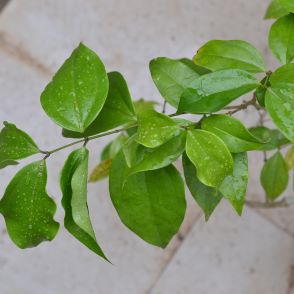
| Plant | Strychnos nux vomica |
| Malayalam | Kanjiram |
| English | Poison nut |
| Hindi | Kuchala (कुचला) |
Medicinal Uses
Highly toxic. In small doses, it is a tonic and stimulant and used for treating nervous disorder and paralysis. Seeds are used for treating fever, indigestion, dysentery, paralytic and neuralgic affections. Also useful in treating impotence, dyspepsia, heart disease. Leaves are applied as poultice in the treatment of chronic ulcers.
#2. Bharani/Bharani
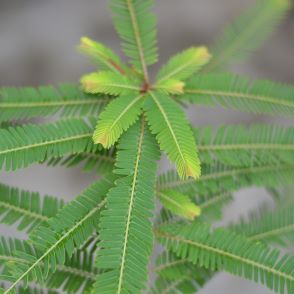
| Plant | Emblica officinalis |
| Malayalam | Nelli |
| English | Indian gooseberry |
| Hindi | Amla (आँवला) |
Medicinal Uses
Thriphala. Fruit is astringent, diuretic and laxative, and used in the treatment of mental disorder. Seed is used for treating asthma, bronchitis and biliousness. Leaves are used for treating conjunctivitis, inflammation and dysentery, and the bark in the treatment of gonorrhoea, jaundice and diarrhoea.
#3. Karthika/Krittika
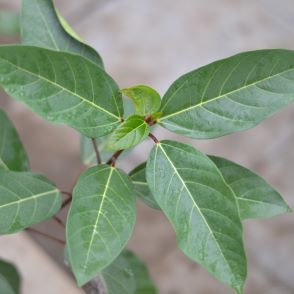
| Plant | Ficus racemosa |
| Malayalam | Atthi |
| English | Cluster fig |
| Hindi | Audumbar (औदुंबर) |
Medicinal Uses
Nalpamaram. Decoction prepared from the bark is used as a wash for wounds and also used in the treatment of venereal diseases. It is also efficacious in threatened abortions and recommended in uropathy. Ripe fruits are sweet, cooling and are used in treating haemoptysis and vomiting. Roots are useful in treating dysentery.
#4. Rohini/Rohini
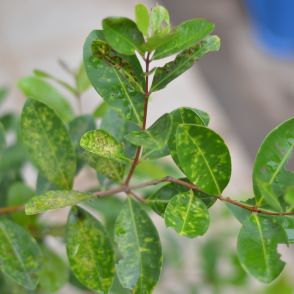
| Plant | Syzygium jambolanum |
| Malayalam | Njaval |
| English | Black plum |
| Hindi | Jamun (जामुन) |
Medicinal Uses
Bark is used in the treatment of diabetes, haemorrhage, gastric disorders, fever, skin disease and wounds. Fruit and seed are used for treating diabetes, diarrhoea, pharyngitis, splenopathy, urinary disorder and ring worm. Black plum vinegar is a cure for enlargement of spleen, diarrhoea and urine retention issues.
#5. Makayiram/ Mrigshirsha
Photo to be pasted
| Plant | Acacia catechu |
| Malayalam | Karingali |
| English | Cutch tree |
| Hindi | Babool kattha (बबूल कत्था) |
Medicinal Uses
Bark is used in thirst quenching preparations and is anti-cancerous. Wood is hypoglycaemic, anti-inflammatory and hypotensive, and is used in the treatment of cough, itching, leprosy, skin diseases, worm infestation, loss of appetite, diarrhoea, dysentery, ulcer, wound, anaemia and diabetes.
#6. Thiruvathira/Ardra
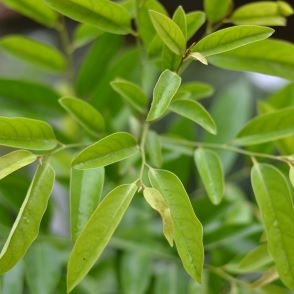
| Plant | Diospyros ebenum |
| Malayalam | Karimaram |
| English | Black ebony |
| Hindi | Abnus (आबनूस) |
Medicinal Uses
Unripe fruit, leaf, fruit and bark are used as laxative and aphrodisiac and also in the treatment of nasal bleeding, flatulence, anaemia, burns and scabies.
#7. Punartham/Punarvasu
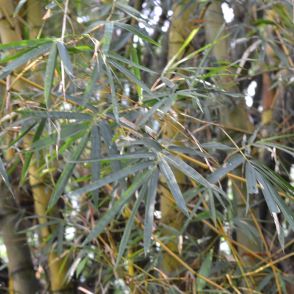
| Plant | Bambusa bambos |
| Malayalam | Mula |
| English | Bamboo |
| Hindi | Baans (बांस) |
Medicinal Uses
Bamboo juice can cure ulcers, indigestion and diarrhea. Roots are used in treating leprosy, skin disease, burning sensation, ringworm and general debility. Leaves are used in the treatment of ophthalmopathy, haemorrhoids, diarrhoea, gonorrhoea, wounds, skin diseases and fever.
#8. Pooyam/Pushya
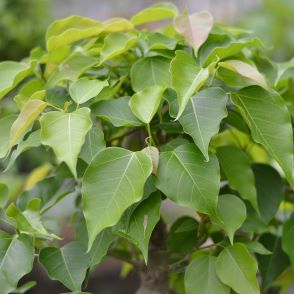
| Plant | Ficus religiosa |
| Malayalam | Arayal |
| English | Sacred fig |
| Hindi | Peepal (पीपल) |
Medicinal Uses
Nalpamaram. Leaves and tender shoots have purgative properties and are used for treating wounds and skin diseases. Bark is used in the treatment of gonorrhoea, diarrhoea, dysentery, haemorrhoids, gastro heliosis, liver disease, ulcer and burns. Latex is good for neuralgia, inflammations and haemorrhages. Fruits are laxative and digestive.
#9. Ayilyam/Ashlesha
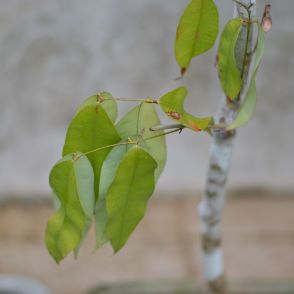
| Plant | Mesua ferrea |
| Malayalam | Nank (Nagapoo) |
| English | Beauty leaf tree |
| Hindi | Nagkesar (नागकेसर) |
Medicinal Uses
Bark and roots are used in treating gastritis and bronchitis. Oil extracted from the seeds is used for treating sores, scabies, wounds and rheumatism. Dried flowers are used in the treatment of piles, dysentery, thirst, irritability of the stomach, cough and indigestion. Leaves and flowers are used for treating scorpion stings.
#10. Makam/Magha
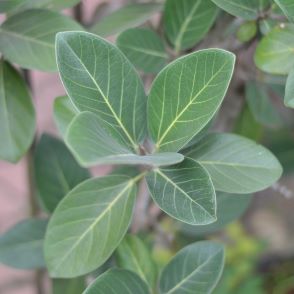
| Plant | Ficus benghalensis |
| Malayalam | Peral |
| English | Banyan tree |
| Hindi | Vad (वड, वट) |
Medicinal Uses
Nalpamaram. Stem bark, root bark, aerial roots, leaves, vegetative buds and milky exudates are used for medicinal purposes. Infusion of the bark cures dysentery, diarrhoea, uterine problems, nervous disorders and diabetes. Latex is used to treat rheumatism and lumbago, burning sensation and vaginal disorders.
#11. Pooram/Purvaphalguni
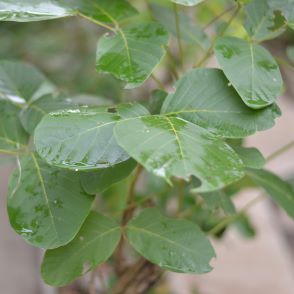
| Plant | Butea monosperma |
| Malayalam | Plash |
| English | Flame of the forest |
| Hindi | Palash (पलाश) |
Medicinal Uses
Leaves for boils, flatulence and worm infestation. Flowers for fever, leprosy, skin disease, swelling, arthritis, bone fracture and birth control. Seeds for herpes, ringworm, arthritis, constipation and diabetes. Bark for diarrhoea, haemorrhoid, rectal diseases, ulcer, tumour and diabetes. Gum for diabetes, leprosy, ulcer, hyper acidity, dyspepsia and fever.
#12. Uthram/Uttaraphalguni
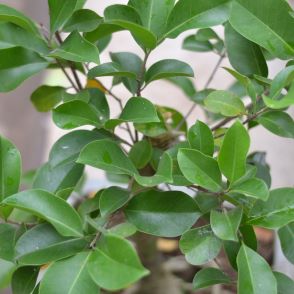
| Plant | Ficus microcarpa |
| Malayalam | Itthi |
| English | Indian laurel |
| Hindi | Juvvi |
Medicinal Uses
Nalpamaram. Used in the treatment of raktapitta doshas, ulcer, skin disease, burning sensation and inflammation. Bark and leaves are used for treating diarrhoea, dysentery, diabetes, ulcers, bruises, colic, hepatopathy, erysipelas, dropsy, ulcerative stomatitis, hemoptysis, psychopathy, leucorrhoea and vaginal hemorrhage.
#13. Atham/Hasta

| Plant | Spondias pinnata |
| Malayalam | Ambazham |
| English | Hog plum |
| Hindi | Ambara (अम्बाड़ा) |
Medicinal Uses
Bark is used in the treatment of dysentery, diarrhoea, vomiting and muscular rheumatism. Ripe fruits are used in the treatment of indigestion, diarrhoea and general debility. Unripe fruits are astringent, sour, appetiser and aphrodisiac. Roots are useful in regulating menstruation.
#14. Chithira/Chitra
Photo to be pasted
| Plant | Aegle marmelos |
| Malayalam | Koovalam |
| English | Golden apple |
| Hindi | Bael (बेल) |
Medicinal Uses
Root is an ingredient of Dashamoolam and used for treating diabetes and leprosy. Unripe fruits are used as cardiac depressant and for digestion. Leaves and fruits are used for treating diabetes, diarrhoea and dysentery. Fruit pulp is used to treat mouth ulcers and stomach disorders. Bark is used for treating intestinal disorders.
#15. Chothi/Swati
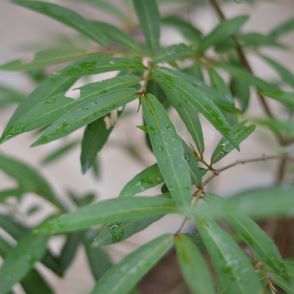
| Plant | Terminalia arjuna |
| Malayalam | Nirmaruthu |
| English | Arjuna tree |
| Hindi | Arjun (अर्जुन) |
Medicinal Uses
Bark is diuretic, cardiac tonic and is used in the treatment of cirrhosis of liver. Bark is also used for treating fracture, ulcer, abnormal vaginal discharge and urethra, diabetes, fatigue, asthma, bronchitis, tumour, haemorrhage and hypertension.
#16. Visakham/Visakha
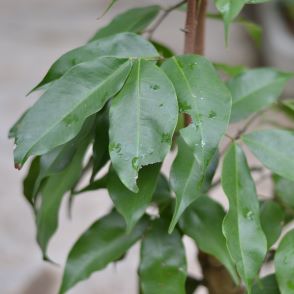
| Plant | Feronia elephantum |
| Malayalam | Vaiyyankatha |
| English | Governor’s plum |
| Hindi | Kaith (कैठ) |
Medicinal Uses
Bark, leaves and fruits are useful in the treatment of rheumatism, nausea, indigestion, flatulence, colic, diarrhoea, inflammations, skin diseases, diabetes, jaundice and tumours.
#17. Anizham/Anuradha
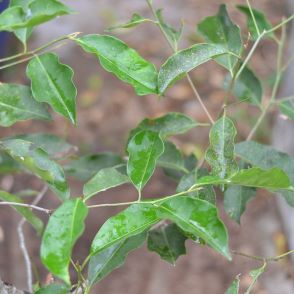
| Plant | Mimusops elengi |
| Malayalam | Ilenji |
| English | Bullet wood tree |
| Hindi | Bakul (बकुल), Maulsari (मौलसरी) |
Medicinal Uses
Flowers are used for treating heart diseases, fever, headache and body aches. Bark and seed coat are used to treat gum bleeding and is an ingredient of herbal tooth powders. Tender stems are used as tooth brushes, also used for treating diarrhoea and dysentery. Flowers are used for preparing a lotion for washing wounds and ulcers.
#18. Triketta/Jyeshtha
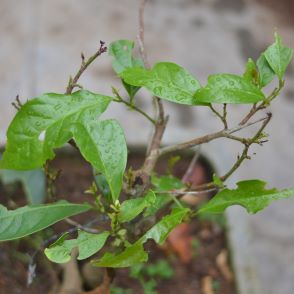
| Plant | Aporusa lindleyana |
| Malayalam | Vetti |
| English | Bodh tree |
| Hindi | Semal (काटेसांवर) |
Medicinal Uses
Roots are useful in the treatment of mental disorders, headache, fever and jaundice. Leaves are used as shampoo for cleaning hair. Bark is used for the treatment of biliousness, haemorrhage, diarrhoea, gonorrhoea and eye diseases.
#19. Moolam/Mula
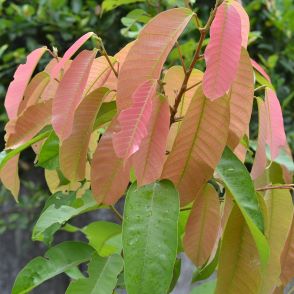
| Plant | Vateria indica |
| Malayalam | Vella kundirikkam |
| English | White dammar |
| Hindi | Kahruba (खरूबा) |
Medicinal Uses
Resin obtained from the bark is useful in treating chronic bronchitis and throat troubles. The resin is also used for treating cough, asthma, leprosy, skin eruptions, crack infection, wounds, ulcer, arthritis and strengthening the female hormone system.
#20. Pooradam/Purvashadha
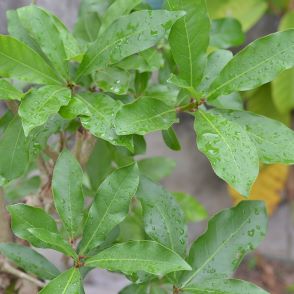
| Plant | Salix tetrasperma |
| Malayalam | Vanchi |
| English | Indian willow |
| Hindi | Bed-laila (बेद लैला) |
Medicinal Uses
The plant is antimicrobial, antioxidant, cytotoxic, analgesic, anti-inflammatory, antipyretic, laxative and diuretic, and is used to treat ailments such as diabetes, fever, piles, epilepsy, rheumatism, swellings, stones in bladder, wound, ear pain, dysentery, cough and cold.
#21. Uthradam/Uttarashadha
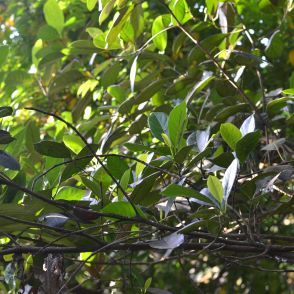
| Plant | Artocarpus heterophyllus |
| Malayalam | Plavu |
| English | Jack fruit tree |
| Hindi | Katahal ka ped (कटहल का पेड़) |
Medicinal Uses
Ripe fruits are sweet, cooling, laxative, aphrodisiac and tonic. Unripe fruits are acrid, astringent, carminative and tonic. Seeds are diuretic, aphrodisiac and constipating. Leaves are used for treating fever, boils, wound, skin disease. Wood is useful in the treatment of convulsions. Roots have antidiarrheal properties.
#22. Thiruvonam/Shravana
Photo to be pasted
| Plant | Calotropis gigantea |
| Malayalam | Erukku |
| English | Crown flower |
| Hindi | Madar (मदार) |
Medicinal Uses
Root is used in the treatment of cutaneous diseases, cough, asthma and gastric secretions. Root bark is used to treat leprosy. Leaves are used in treating paralysis, arthralgia, swelling and fever. Flowers are used in the treatment of anorexia and tumour.
#23. Avittom/Dhanishtha
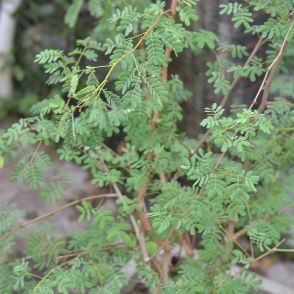
| Plant | Prosopis juliflora |
| Malayalam | Vahni |
| English | Indian gum tree |
| Hindi | Shami (शमी) |
Medicinal Uses
Bark has anti-inflammatory properties and used in the treatment of scorpion sting. Flowers are used to prevent miscarriage and also in the treatment of rheumatism.
#24. Chathayam/Shatbhisha
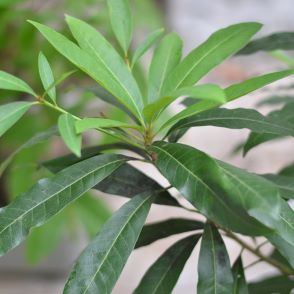
| Plant | Anthocephalus cadamba |
| Malayalam | Kadambu |
| English | Common bur flower tree |
| Hindi | Kadamb (कदंब) |
Medicinal Uses
Fruits are used in treating gastric irritability and fever. Decoction of leaves is good for diabetes, ulcers, wounds and worms. Bark is used in the treatment of inflammation, gastric disorders, fever, cough, diarrhoea, vomiting, burning sensation, uterine complaints, eye disease, conjunctivitis, wounds, ulcer and debility. The root is diuretic.
.
#25. Pooruruttathi/Purvabhadrapada

| Plant | Mangifera indica |
| Malayalam | Mavu |
| English | Mango tree |
| Hindi | Aam ka ped (आम का पेड़) |
Medicinal Uses
Ripe fruit is laxative, nourishing, invigourating and refrigerant. Extract of leaves, bark and stems and unripe fruit are used in the treatment of inflammation of the mucous membrane, cough, and bronchitis, tuberculosis, general debility, anemia, indigestion, gum inflammation, vermifuge, wounds, skin disease, scurvy, and chapped feet.
#26. Uthrattathi/Uttarabhadrapada
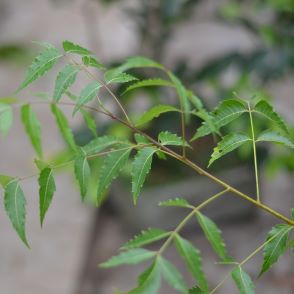
| Plant | Azadirachta Indica |
| Malayalam | Aryaveppu |
| English | Margosa |
| Hindi | Neem (नीम) |
Medicinal Uses
Leaves are antiseptic and applied to boils as poultice, also used for treating leprosy, eye disorders, intestinal worms, stomach upset, loss of appetite, skin ulcers, fever, diabetes, liver problems, birth control and to cause abortions. Neem flower is used as tonic and stomachic. Berries are purgative and emollient. Seeds oil is used for skin afflictions.
#27. Revathi/Revati
Photo to be pasted
| Plant | Madhuca longifolia |
| Malayalam | Ilippa |
| English | Butter tree |
| Hindi | Mohwa (मोहवा, मोह) |
Medicinal Uses
Bark, leaves and flowers are useful in the treatment of cold, cough, bronchitis, general debility and piles. Seed oil is galactogenic (stimulating breast milk) and pain-relieving. Also used for treating inflammation, sprain, epilepsy, skin diseases and rheumatism. Bark is used in the treatment of tonsillitis, gum troubles, diabetes and ulcers.
Notes:
1. My knowledge of medicinal plants is limited to what I have gathered from plant nurseries and the Internet. I bought all plants from plant nurseries. It is likely that the plant names as specified by the nurseries could have been incorrect, or I may have wrongly noted the names, or the names could have got mixed up when I was moving around the plants in my plant nursery. So, if some plant names are incorrect, kindly bear with me and feel free to give me feedback to correct them.
2. The medicinal uses of plants enumerated above are only for information. Always seek advice from a practicing medical professional before using a plant medicinally. lifeclosetonature.com does not take any responsibility for adverse effects, if any, from the medicinal use of any plant, based on the information given above.